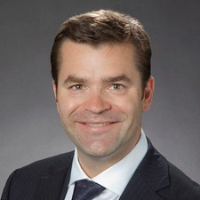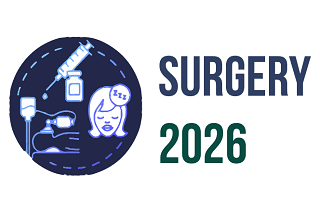Surgery and Anesthesia
Surgery 2026

Virginia Mason Medical Center, USA
Abstract:
Background: Application of Enhanced Recovery After Surgery (ERAS) pathways in robotic lobectomy has been associated with decreased length of stay (LOS). We evaluated differences in patient characteristics and adherence of ERAS benchmarks by discharge groups at a tertiary referral center.Materials and Methods: We performed a retrospective analysis of a prospectively maintained ERAS database of patients undergoing robotic lobectomy for pulmonary malignancy. Patients were trifurcated into LOS groups, postoperative day 1, 2-3, and 4+.ERAS adherence, complications, and readmissions were analyzed.Results: Between October 2018 and August 2022, 145 consecutive patients were reviewed. Eighty-two (56.6%) were discharged on POD1, 50 (34.5%) POD2-3, and 13 (9.0%) POD4+. Patientsachieving POD1 discharge had better preoperative pulmonary function (FEV1 p=0.023, DLCO p=0.007) and shorter operative times (p=0.001). Of the fifty-five patients (37.9%) who experienced an air leak on POD1, the majority (64.0%) had a LOS of POD 2-3 (p<0.001). Twenty five (17.2%) patients were discharged with a chest tube. The POD1 discharge group ambulated earlier (p=0.005) and experienced no inpatient complications. Only 3.7% of the POD1 group were readmitted (p=0.035). Those experiencing a minor inpatient complication ambulated 5.8 hours slower than those who do not.Conclusion: ERAS principles can facilitate POD1 discharge in the majority of patients undergoing robotic assisted lobectomy without an increase in complications or readmissions. Early ambulation and chest tube removal are modifiable elements of ERAS associated with POD1 discharge.
Biography:
Dr Michal (Misho) Hubka is a robotic thoracic surgical oncologist from Virginia Mason in Seattle, WA. He completed his BS and MD studies at the University of Washington School of Medicine. He serves as chief of thoracic surgery and executive medical director of the Center for Digestive Health at Virginia Mason. He has published 29 manuscripts in reputed journals on topics of robotic lobectomy, esophagectomy and paraesophageal hernia repair as well as clinical recovery after surgery. He has been voted Top Doctor in Seattle, USA for the past seven years.
